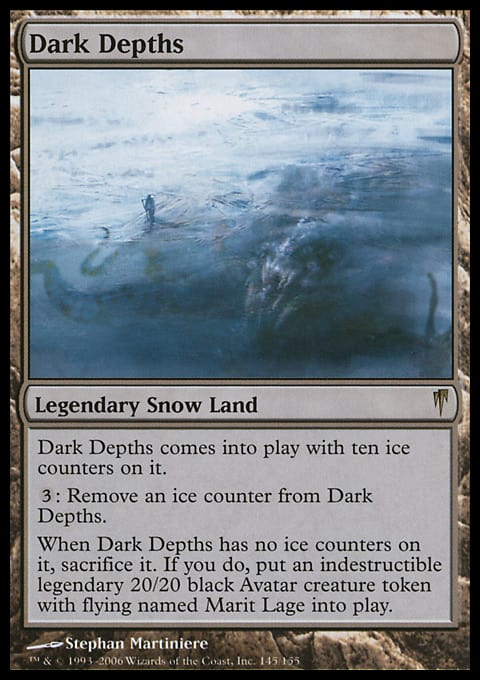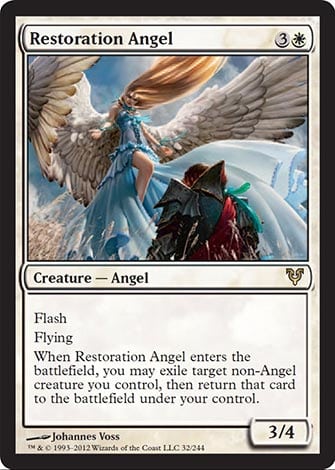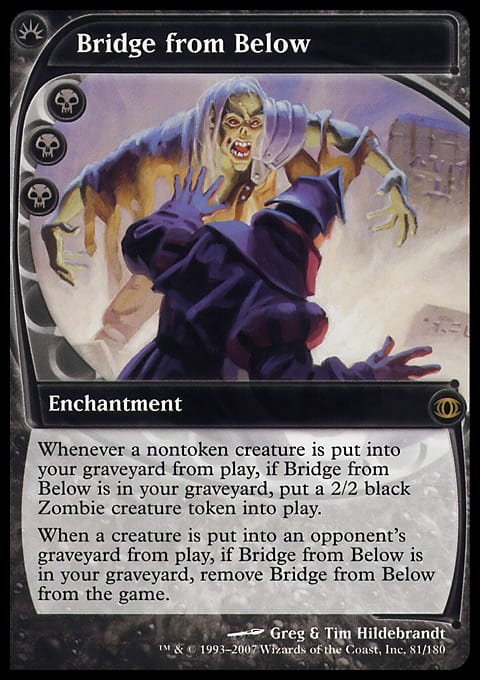The world of Magic finance is a land of ever-shifting prices, a place where speculators hit it big and strike out every day. What can you do as a trader to minimize this risk? The answer truly depends on what type of speculation you are looking to do and how much risk you are willing to take on. Last week, I talked a little about penny stocks in comparison to the much safer and more stable investments of Magic such as sealed product and Beta. This week, I want to stray away from my comfort zone and talk about a few different types of speculation that I don’t use as often. Most of the speculation mentioned in this article is a higher risk than I typically like to take.
Weekend Price Speculation
The first type of speculation I want to talk about is something that only occurs at major events, primarily Grands Prix but to a lesser extent, Pro Tour Qualifiers as well. What I am referring to is something called a weekend price. This type of speculation usually relies on you having some knowledge of a particular deck or card that will probably be in high demand that weekend but has not risen in price. For example, back when Pro Tours were open to the public, I was in Austin a few years ago when Vampire Hexmage had just become legal. I believe the format was old Extended, which also included Coldsnap during that time. As everyone now knows, there happened to be a card in that set, Dark Depths, which seemed to combo well with Hexmage. Although most people knew about this combo before the weekend, the price had not had a chance to catch up with the demand on them yet, and therefore, local stores and even some online websites still had some in stock. I took a chance and picked up every copy I could find at the time. Looking back, I of course wish I would have been able to find more, but as always, dwelling on lost profit will drive you crazy.
I arrived at the Pro Tour to find that every vendor was in a desperate scramble to buy more Dark Depths since it seemed everyone was on that deck. I watched the sell price go from $20 to $40 and even higher at some booths in a matter of an hour. This, of course, made me look like a genius at the time, as I unloaded the copies I had at an obscene margin, selling for $35 when they were outing them at $40.
At almost every major event where a new deck or archetype hits, this can be expected, but it is much harder to gauge what that deck may be, and you can’t always get the cards for such a low price like Dark Depths. A better example of the common occurrence of this would be Huntmaster of the Fells during the first Pro Tour this year. Although a lot of people had that card on their radars, it was already more than I was comfortable paying for it. People who did buy them when they briefly dropped as low as $10 may have doubled their money, but there is always the risk that it isn’t played or doesn’t place well and you will have speculated on what may be a $5 card the next week. If you believe you have the proper insight and feel comfortable making taking a risk, there can be great reward involved, but be wary to never dive too deep—one bad call can lose you a lot of money if you spent too much.
Prerelease Speculation
Moving on, we have one of the most volatile speculations: prereleases. Cards during prerelease weekend are usually overhyped and therefore overpriced. Although this holds true for most cards in a particular set, there are almost always some hidden gems among the bunch, and given the right time and deck, some of these cards can soar in price. Looking for these cards is really about metagame analysis more than anything—knowing how to evaluate the current field and looking two steps ahead. I am typically looking beyond the current archetypes; they have been established, and unless a new card like Restoration Angel is introduced into an existing deck, they don’t have a lot of room for growth. Instead, look for the deck that beats the current Tier 1 decks—is there a potential sleeper in the new set that may see a lot of play if one of the current decks becomes dominant? Then, look beyond that deck and try to establish a mental metagame a month from now. Is there anything in the new set that may be in one of those decks or be the key to beating one of those decks? Questions like this are necessary when evaluating new cards, but they also lead to a lot of unknown factors. Perhaps the metagame doesn’t shift the way you thought or a deck has a few bad weekends. As I mentioned before, there is always a risk involved with new cards, but hedging your bets on cheaper cards will usually keep you from losing too much if things don’t pan out your way.
If you do decide you want to go in on something like Huntmaster of the Fells that already has an established price, it is a good idea to plan for the worst. Given a card like Huntmaster, you can assume the price should always be above bulk. In these scenarios, it is best to plan an escape route if things start looking down; always know what your minimum is, and if the card hits that number, attempt to recoup some of your cost. This also holds true if you do successfully identify a card that goes up in price after you pick copies of it up. Always know what you are looking to get from them, and don’t be too greedy on your returns. If a card I picked up at $10 hits $20 and I have a chance to sell them for $17 each, I will at least sell enough to break even. Say you managed to snag four play sets before the price jumped at $10 each:
(10 × 12) − (17 × X) ≥ 0
If you believe the card has potential to grow further, sell off what you need to break even, and hold onto the rest. This assures that you will at least recoup what you spent if the card suddenly becomes outclassed and falls out of favor or is banned. In this case, you would need to sell around seven of them to be back at the start, allowing you to trade off or hold the others for future gain.
Metagame Speculation
The last type of speculation I want to talk about this week is metagame speculation. This may sound like a broad topic, but when you get down to it, the process is the same across the board. The key is to always be one step ahead of the players no matter what format you are looking at. Legacy is a better example of how this process works than Standard, given the constant shift in decks combined with a more stable price index on proven cards. This form of speculation is unlikely to make you a ton with each individual card, but instead, it allows you to trade that high yield for a more secure type of speculation.
Given that most of the format staples have a previous history in the format, they are unlikely to tank below a certain price even if the deck is seeing little to no play at that time. If you watch the current metagame, though, you can see a trend in the decks played over a certain period of time and use that to know when the correct time to pick up certain cards are. If it looks like the Top 8 of a StarCityGames Open is lacking graveyard hate in sideboards, you can almost always be sure that you are not the only one to notice that, meaning a player may lean heavily toward Dredge or Reanimator over the following weeks. If these decks have not made an appearance in a while, you may be able to find people looking to unload them at a cheaper price than if they were making weekly Top 8s. The same hold true for all of the archetypes; learning how to stay a few weeks ahead of the players not only assures you will be able to find the cards cheaper, but it also means you will have those cards when the metagame does catch up and they are at a premium at a major event.
This practice can be applied to any format if you understand the intricacies and know how to judge the upcoming decks. It usually helps to either be a player or have a good playtest group from which you gather information in order to read these signals. Providing your local players with cards to borrow not only harbors a good relationship when they are looking to buy or sell cards down the road, but it also provides you with information as to what they are playing, which you can use to decide where the metagame is headed.
I am headed off to the Invitational this weekend in Indianapolis, which should prove to be a good time. Trading at StarCityGames events has proven to be a great boon due to the lack of dealers present. Given the prices StarCityGames offers on some cards, people are more likely to be looking to trade for what they want, and as a trader, that is obviously a plus. I hope to see some familiar faces in Indy this weekend, and if you happen to be by the trade tables, come introduce yourself.
Next week, I am hoping to talk a little bit more about the road trip process I have covered in the past and bring everyone up to date on how that is going. I also have a few other topics to cover, so the article will probably be a potluck of information as I have done in the past. If you think there is anything pressing I should cover next week, feel free to leave me a comment or send me a tweet as always!
Ryan Bushard


























